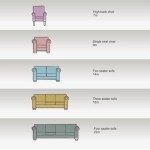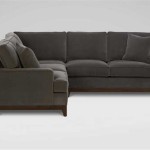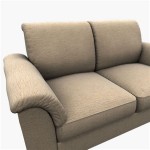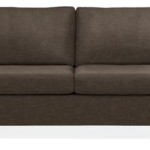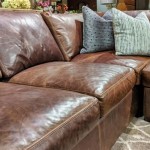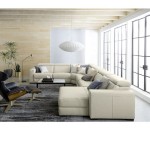Traditional Sofas and Chairs: Enduring Style and Comfort
Traditional sofas and chairs represent a timeless aesthetic in furniture design. These pieces often evoke feelings of comfort, elegance, and sophistication, drawing inspiration from various historical periods and design movements. Unlike contemporary styles that prioritize minimalist aesthetics or avant-garde forms, traditional furniture emphasizes intricate details, rich materials, and enduring craftsmanship.
The category encompasses a wide variety of styles, each with distinctive characteristics. Queen Anne, Chippendale, Victorian, and Chesterfield are just a few examples of popular traditional styles that continue to be admired and sought after for their unique charm and historical significance. Understanding the nuances of these styles can help individuals make informed decisions when selecting furniture that complements their home's overall decor and personal preferences.
The appeal of traditional sofas and chairs lies in their ability to create a warm and inviting atmosphere. Their classic silhouettes and refined details add a touch of grandeur to any space, while their comfortable cushions and supportive frames provide a welcoming seating experience. The use of high-quality materials, such as solid wood frames, luxurious fabrics, and hand-applied finishes, further enhances their durability and aesthetic appeal.
Key Features of Traditional Sofa and Chair Design
Traditional sofas and chairs are distinguished by several key features that set them apart from other furniture styles. These features often include elaborate detailing, specific construction techniques, and the use of particular materials. Recognizing these elements is crucial for identifying authentic traditional pieces and appreciating the artistry involved in their creation.
One of the defining characteristics of traditional design is the emphasis on intricate ornamentation. This can manifest in the form of carved wood detailing, such as cabriole legs, claw feet, and scrolled arms. These decorative elements add visual interest and depth to the furniture, showcasing the skill and craftsmanship of the artisans who created them. The detailing is often inspired by natural motifs, such as leaves, flowers, and shells, further enhancing the furniture's connection to historical design traditions.
The construction of traditional sofas and chairs typically involves time-honored techniques designed to ensure longevity and structural integrity. Frames are often made from solid hardwoods, such as mahogany, walnut, or oak, which are known for their strength and durability. Joints are carefully reinforced using methods like mortise and tenon or dovetail joinery, creating a robust and stable foundation for the furniture. The attention to detail in the construction process is a testament to the commitment to quality that is characteristic of traditional furniture.
Upholstery plays a crucial role in the overall aesthetic of traditional sofas and chairs. Luxurious fabrics, such as velvet, damask, brocade, and leather, are commonly used to create a sense of opulence and comfort. These fabrics are often adorned with intricate patterns and textures that complement the furniture's carved detailing. Button tufting, nailhead trim, and piping are also frequently employed to add visual interest and enhance the upholstery's overall appearance. The choice of fabric and upholstery details can significantly impact the furniture's style and character, contributing to its unique appeal.
Common Traditional Sofa and Chair Styles
The world of traditional sofas and chairs encompasses a diverse range of styles, each with its own unique history, characteristics, and design elements. Understanding the key differences between these styles can help individuals identify pieces that resonate with their personal tastes and complement their interior decor.
The Queen Anne style, popular during the early 18th century, is characterized by its graceful curves, elegant cabriole legs, and understated ornamentation. Queen Anne sofas and chairs often feature a high back, scrolled arms, and a comfortable, slightly reclined seating position. Walnut was the preferred wood for Queen Anne furniture, and the upholstery typically consisted of rich fabrics like silk or velvet. This style embodies a sense of refined elegance and sophistication, making it a popular choice for formal living rooms and drawing rooms.
The Chippendale style, named after the renowned English furniture maker Thomas Chippendale, gained prominence in the mid-18th century. Chippendale furniture is distinguished by its intricate carvings, elaborate pierced backs, and variety of leg styles, including cabriole legs, straight legs, and claw-and-ball feet. Chippendale sofas and chairs often feature a mahogany frame and are upholstered in luxurious fabrics such as damask or brocade. This style blends elements of Gothic, Rococo, and Chinese design, resulting in a unique and eclectic aesthetic.
Victorian sofas and chairs, popular during the reign of Queen Victoria in the 19th century, are known for their opulent ornamentation, plush upholstery, and elaborate silhouettes. Victorian furniture often features deep button tufting, heavily padded arms, and intricately carved frames. Dark woods like mahogany and rosewood were commonly used, and the upholstery typically consisted of rich fabrics like velvet, brocade, or tapestry. Victorian style reflects the Victorian era's emphasis on grandeur, comfort, and sentimental ornamentation.
The Chesterfield sofa, an iconic piece of traditional furniture, is characterized by its deep button tufting, rolled arms that are the same height as the back, and leather upholstery. Chesterfield sofas are typically made with a solid hardwood frame and are designed for both comfort and durability. While traditionally upholstered in leather, Chesterfield sofas can also be found in a variety of other fabrics, such as velvet or linen. This style exudes a sense of timeless elegance and sophistication, making it a popular choice for libraries, studies, and living rooms.
Considerations When Choosing Traditional Furniture
Selecting traditional sofas and chairs requires careful consideration of several factors, including the furniture's style, size, materials, and overall condition. By taking these factors into account, individuals can ensure that they choose pieces that not only complement their home's decor but also provide lasting comfort and enjoyment.
The first step in choosing traditional furniture is to determine the specific style that aligns with personal preferences and the overall aesthetic of the room. Consider the historical period or design movement that resonates most strongly and research the key characteristics of that style. This will help narrow down the options and ensure that the chosen furniture complements the existing decor.
Size is another crucial factor to consider when selecting traditional sofas and chairs. Measure the available space carefully to ensure that the furniture will fit comfortably without overwhelming the room. Consider the scale of the furniture in relation to other pieces in the room and choose pieces that are proportionate to the overall space. A large, ornate sofa may look out of place in a small room, while a smaller, more delicate chair may get lost in a larger space.
The quality of materials and construction is essential for ensuring the furniture's longevity and durability. Look for sofas and chairs with solid hardwood frames, reinforced joints, and high-quality upholstery. Examine the fabric for signs of wear and tear, and pay attention to the details of the stitching and finishing. Investing in well-made furniture will ensure that it lasts for many years to come.
If purchasing antique or vintage traditional furniture, it is important to carefully assess its overall condition. Look for signs of damage, such as cracks, chips, or missing pieces. Examine the upholstery for stains, tears, or fading. While some wear and tear is to be expected in older pieces, it is important to ensure that the damage is not so severe that it compromises the furniture's structural integrity or aesthetic appeal. Consider having antique furniture professionally restored to bring it back to its former glory.

Buy Traditional Teak Wood Sofa Set Teaklab
Classic Traditional Sofas Guide Dfs
Classic Traditional Sofas Guide Dfs

Buy Classic N Teak Wood Sofa Set Teaklab

Traditional Luxury Sofa Set Hd631 Sofas

Traditional Luxury Sofa Set Hd155 Sofas

Beautiful Traditional Woodfront Sofa Loveseat Grubbs Furniture And Appliances

Traditional Sofas Loveseats Chairs Sets Sectionals Furniture Design Living Room Italian Classic Sofa Corner Fabric

25 Years Of Beautiful Living Rooms Classic Room Traditional Design

How To Arrange The Classic Italian Sofa Set In An Elegant And Luxurious Way With Arredoclassic
Related Posts


